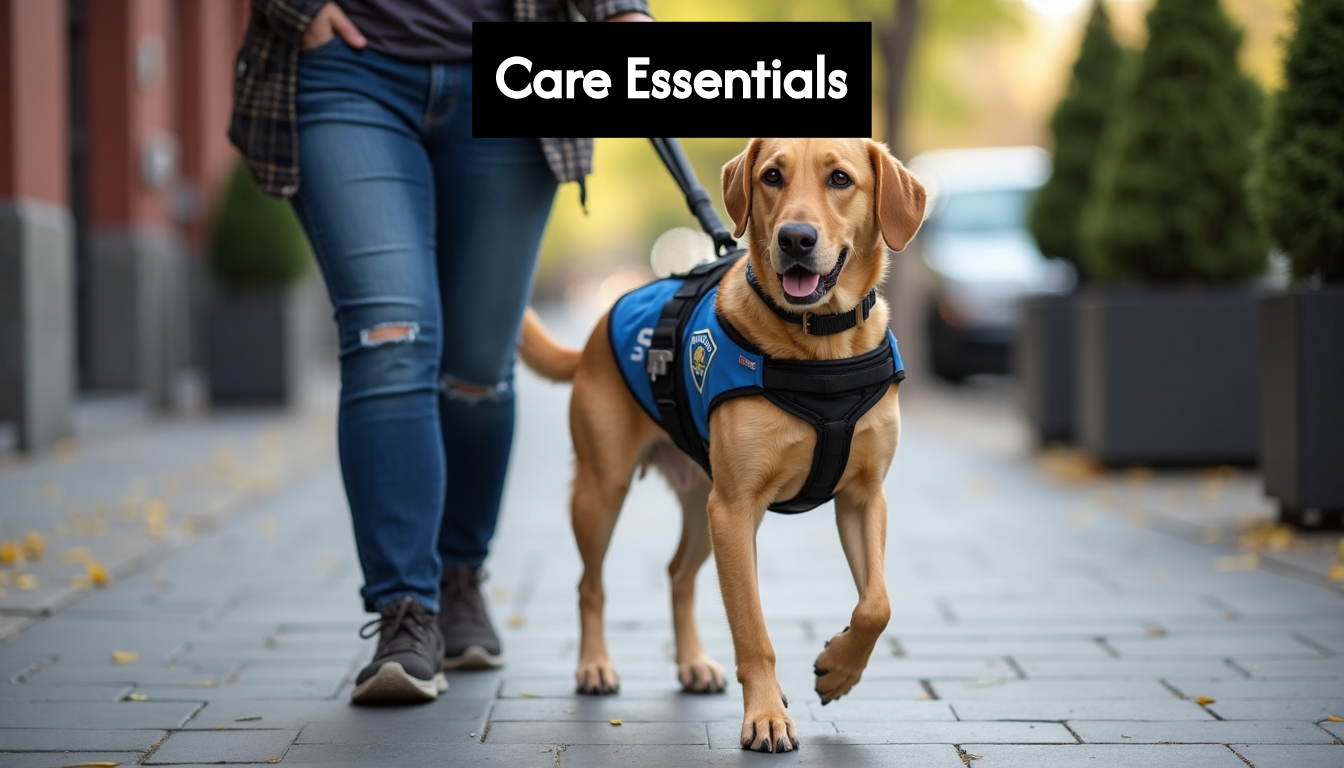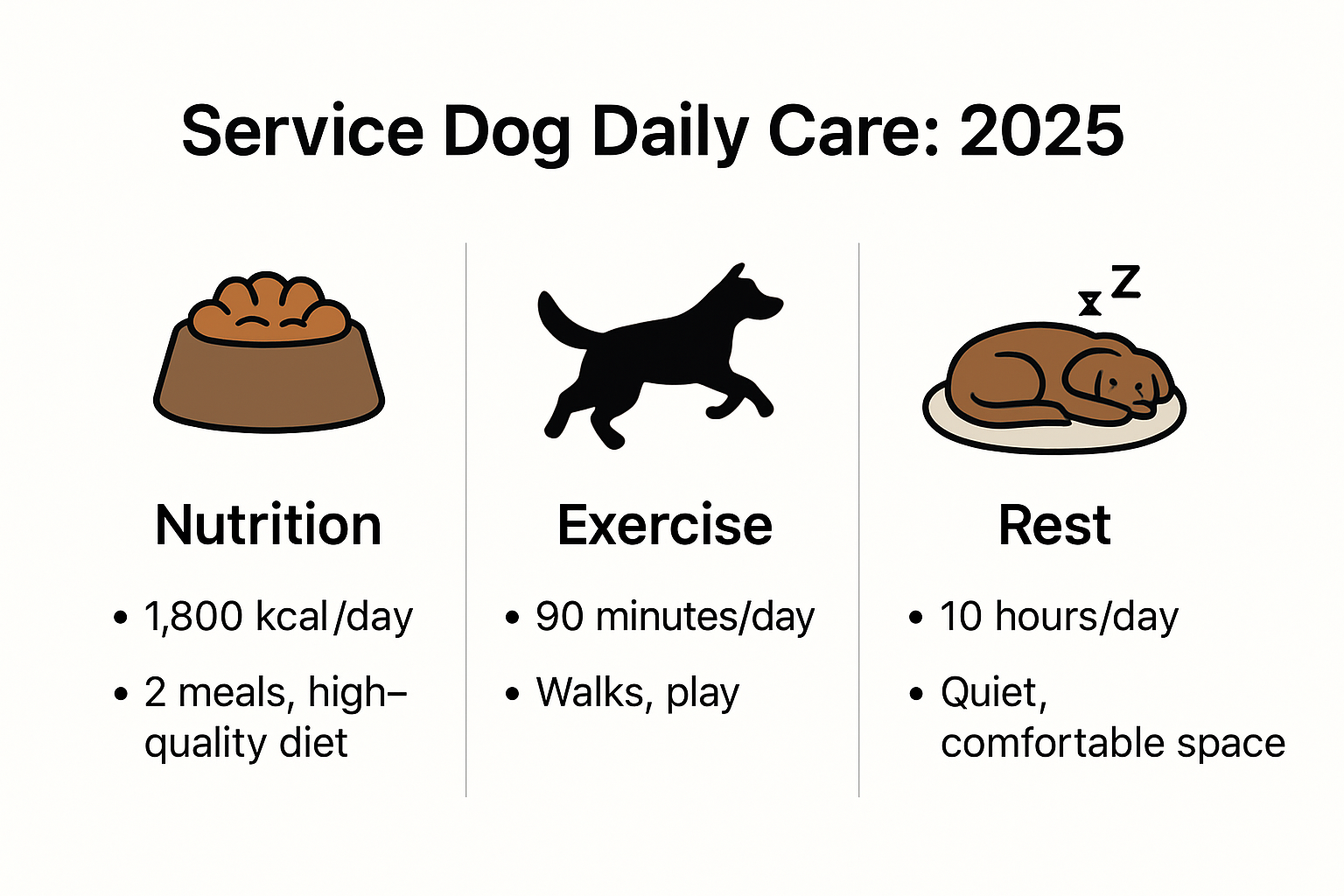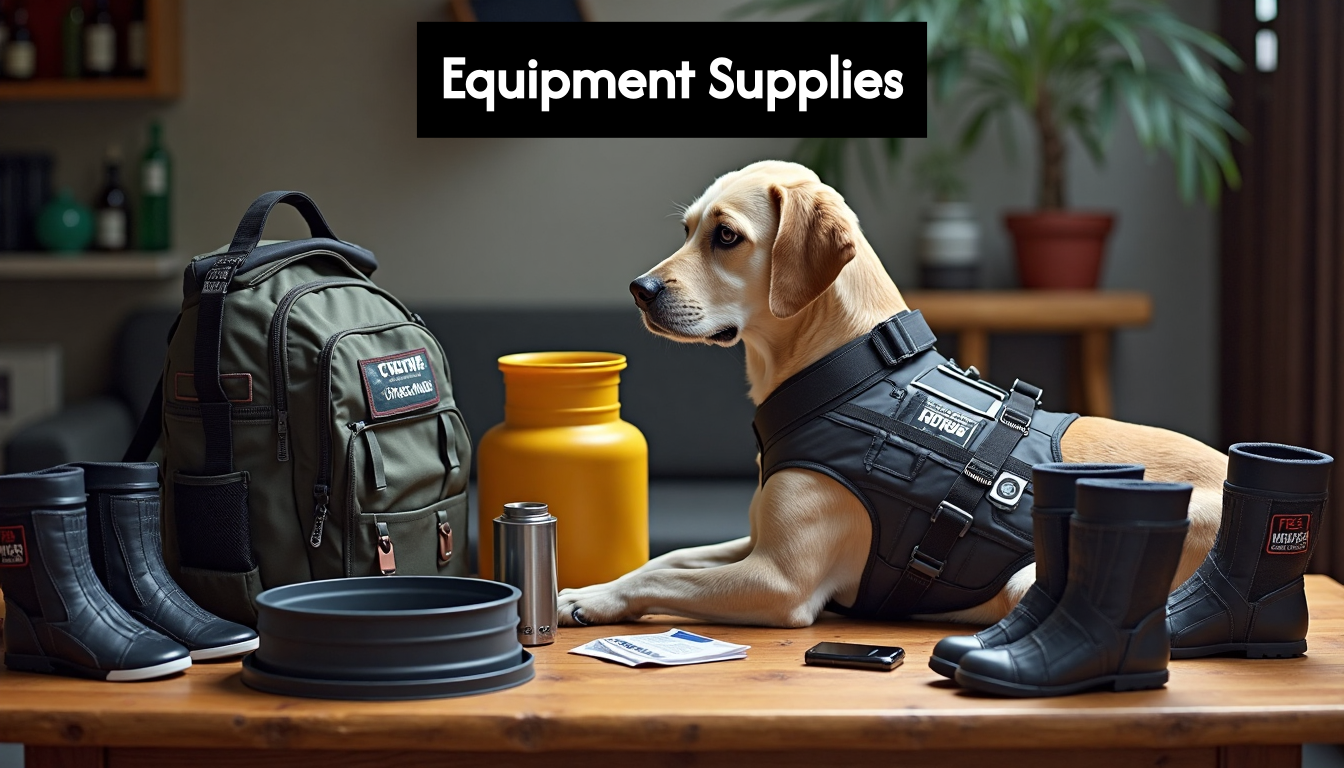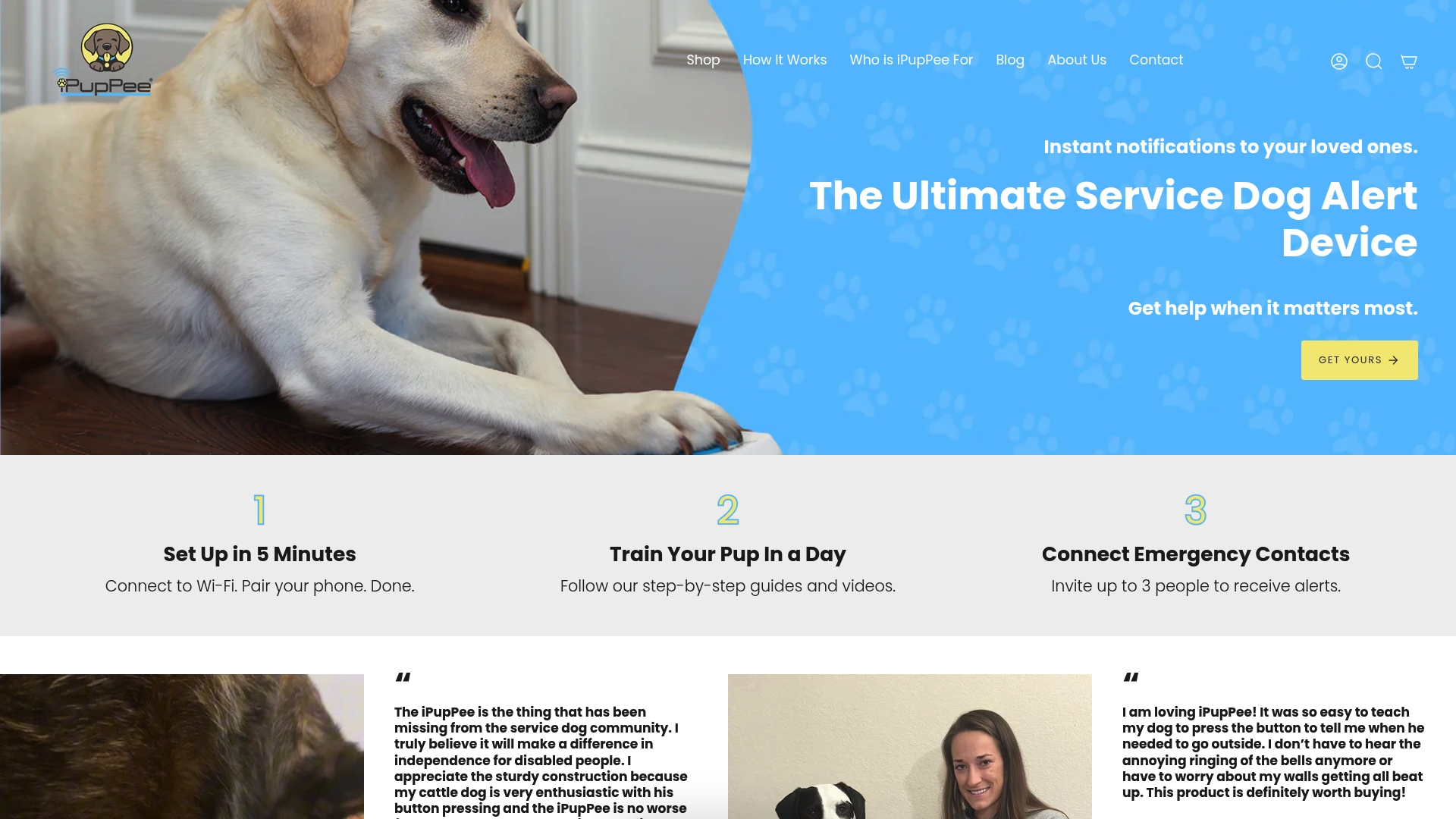 Service dogs are more than loyal companions. They are highly trained partners who often require 20 to 30 percent more calories each day compared to ordinary pets just to keep up with their demanding routines. Most people focus on the colorful vests and impressive obedience, but they overlook what really goes on behind the scenes. The real story is in the details – precise nutrition, daily mental challenges, and advanced equipment – all of which will completely reshape how you think about caring for a working dog in 2025.
Service dogs are more than loyal companions. They are highly trained partners who often require 20 to 30 percent more calories each day compared to ordinary pets just to keep up with their demanding routines. Most people focus on the colorful vests and impressive obedience, but they overlook what really goes on behind the scenes. The real story is in the details – precise nutrition, daily mental challenges, and advanced equipment – all of which will completely reshape how you think about caring for a working dog in 2025.
Table of Contents
- Daily Health And Wellness Needs
- Essential Equipment And Supplies
- Training, Socialization, And Enrichment
- Safety Tips For Handlers And Owners
Quick Summary
| Takeaway | Explanation |
|---|---|
| Proper Nutrition is Essential | Service dogs require a balanced diet tailored to their age, weight, and activity level, often needing 20-30% more calories than typical pets, primarily from high-quality protein sources. |
| Regular Veterinary Check-ups | Quarterly health screenings are crucial for monitoring service dogs’ physical and mental fitness, along with preventive care like parasite control. |
| Comprehensive Training Techniques | Training should emphasize positive reinforcement and socialization to prepare service dogs for diverse stimuli and tasks, focusing on emotional intelligence and continuous skill development. |
| Safety and Public Interaction Awareness | Handlers must understand legal rights regarding public interactions and educate others on service dog etiquette to ensure safe and effective working conditions. |
| Holistic Wellness Plans | A wellness plan must include nutrition, preventative care, mental enrichment, appropriate exercise, and recovery time tailored to each service dog’s unique needs. |

Daily Health and Wellness Needs
Service dogs represent a critical support system for individuals with disabilities, making their daily health and wellness an absolute priority. Maintaining optimal physical and mental condition requires a comprehensive approach that goes beyond basic care.
Nutrition and Diet Management
Proper nutrition forms the foundation of a service dog’s health and performance. Unlike typical pet dogs, service dogs have higher metabolic demands due to their intense daily work responsibilities. Veterinary nutritionists recommend a balanced diet specifically tailored to the dog’s age, weight, activity level, and specific health requirements.
Feeding high-quality protein sources ensures muscle maintenance and energy levels necessary for complex task work. Protein quality matters significantly more than quantity. Look for dog foods with named meat sources as the first ingredient, avoiding generic meat by-products. Working dogs typically require diets with 25-30% protein content and carefully balanced fat percentages.
According to American Veterinary Medical Association, service dogs may need 20-30% more calories compared to standard companion animals. Consultation with a veterinarian specializing in working dog nutrition becomes crucial for developing an individualized meal plan.
Preventative Healthcare Routines
Regular veterinary check-ups represent a non-negotiable aspect of service dog care. These comprehensive examinations go beyond standard vaccinations and include specialized assessments relevant to the dog’s working status. Therapy Dogs International recommends quarterly health screenings that evaluate not just physical condition but also mental fitness for service work.
Parasite prevention takes on heightened importance for service dogs who frequently interact with diverse environments. Monthly heartworm, flea, and tick preventatives are essential. Handlers must maintain meticulous grooming records, ensuring the dog remains clean, well-trimmed, and free from external parasites that could compromise public health interactions.
Mental wellness stands equally critical. Service dogs experience significant psychological stress from constant task performance and environmental stimulation. Structured relaxation techniques, consistent training reinforcement, and dedicated downtime help maintain their emotional equilibrium.
Physical Conditioning and Rest
Physical fitness for service dogs requires a balanced approach integrating structured exercise and strategic rest periods. Daily activity should include moderate cardiovascular exercise, strength training specific to their task requirements, and flexibility maintenance. However, handlers must carefully monitor exertion levels to prevent overtraining.
According to Assistance Dogs International, service dogs need approximately 8-10 hours of quality sleep daily, with multiple shorter rest periods interspersed throughout their working schedule. Creating a consistent sleep environment and protecting their rest time becomes as important as their active working periods.
Handlers should develop a holistic wellness plan that addresses nutritional needs, preventative healthcare, mental stimulation, physical conditioning, and adequate recovery time. Each service dog represents a unique individual requiring personalized attention to maintain peak performance and quality of life.
Proper daily health management ensures these remarkable animals can continue providing critical support, independence, and companionship to their handlers with unwavering reliability.
Essential Equipment and Supplies
 Service dogs require specialized equipment that goes beyond standard pet accessories. These tools are critical for supporting their working capabilities, ensuring safety, and maintaining their professional status in public environments.
Service dogs require specialized equipment that goes beyond standard pet accessories. These tools are critical for supporting their working capabilities, ensuring safety, and maintaining their professional status in public environments.
Working Gear and Identification
A service dog’s gear serves multiple functions beyond simple aesthetics. Professional identification is paramount for smooth public interactions and legal recognition. Active Dogs Service Dog Supply recommends specialized vests and harnesses that clearly communicate the dog’s working status while providing functional benefits.
The ideal service dog vest should include several key features: adjustable straps for perfect fit, reflective material for nighttime visibility, and sturdy attachment points for accessories. Lightweight, breathable materials prevent overheating during extended work periods. Some advanced vests incorporate quick-release mechanisms and padded areas to maximize the dog’s comfort during long shifts.
Color coding plays a significant role in service dog communication. Different colored patches can indicate specific working roles such as mobility assistance, medical alert, or psychiatric support. This visual language helps the public understand the dog’s professional purpose without requiring verbal explanation.
Protective Gear and Mobility Accessories
Protective equipment extends beyond basic identification. Active Dogs Service Dog Supply highlights protective boots as a critical investment for service dogs working in varied environments. These specialized footwear items shield paws from extreme temperatures, chemical residues, sharp objects, and rough surfaces.
Mobility support accessories become crucial for service dogs assisting handlers with physical disabilities. Specialized harnesses with reinforced handles allow direct physical guidance and support. Some advanced designs include load-bearing capabilities, enabling the dog to carry small medical supplies or emergency communication devices.
Temperature regulation accessories such as cooling vests for hot environments and insulated jackets for cold climates help maintain the dog’s core body temperature during extended outdoor work. These items prevent heat exhaustion and hypothermia, ensuring the service dog remains healthy and responsive.
Practical Utility and Communication Tools
Practical utility items transform a service dog from a companion to a comprehensive support system. Clip-on accessory bags allow dogs to carry essential items directly on their vest. These might include handler medications, communication devices, or emergency contact information.
Technology is increasingly integrated into service dog equipment. GPS tracking devices with health monitoring capabilities can provide real-time location and physiological data. Some advanced systems even allow remote communication between the dog and handler, expanding the animal’s supportive capabilities.
Training and maintenance tools are equally important. Collapsible water bowls, portable grooming kits, and compact first aid supplies ensure the service dog remains prepared for any situation. Handlers should select lightweight, durable equipment that does not impede the dog’s movement or working efficiency.
Choosing the right equipment requires careful consideration of the individual service dog’s specific tasks, the handler’s unique needs, and potential environmental challenges. Each piece of gear should be selected with precision, balancing functionality, comfort, and professional appearance.
Ultimately, the right equipment transforms a service dog from a trained animal into a sophisticated, responsive support system that enhances independence and quality of life for individuals with disabilities.
Training, Socialization, and Enrichment
Service dog training represents a complex, multifaceted process that extends far beyond basic obedience. Successful preparation transforms a dog from a simple companion into a sophisticated support system capable of performing intricate tasks and navigating challenging environments with precision and composure.
Science-Based Training Foundations
Modern service dog training relies heavily on positive reinforcement methodologies that prioritize psychological well-being and intrinsic motivation. Medical Mutts Training Institute emphasizes that contemporary training approaches focus on building strong, trust-based partnerships between dogs and handlers rather than using punitive techniques.
Scientific training protocols incorporate advanced behavioral psychology principles. Trainers utilize systematic desensitization techniques that gradually expose service dogs to diverse stimuli, helping them develop calm, predictable responses in unpredictable situations. This approach involves carefully structured exposure to sounds, movements, environments, and social interactions that might otherwise trigger stress or reactive behaviors.
Technology now plays a significant role in training methodologies. Advanced tracking applications and wearable devices allow trainers to monitor physiological responses, learning progress, and behavioral patterns with unprecedented precision. These tools enable more personalized, data-driven training strategies that adapt to each dog’s unique learning style and potential challenges.
Comprehensive Socialization Strategies
Socialization goes beyond simple exposure to different environments. Assistance Dogs International recommends a holistic approach that systematically introduces service dogs to complex social scenarios, preparing them for the unpredictable nature of public interactions.
Successful socialization involves controlled exposure to various environments such as crowded spaces, public transportation, medical facilities, and professional settings. Trainers carefully manage these experiences, ensuring positive interactions that build confidence without overwhelming the dog. The goal is developing a calm, focused animal capable of maintaining composure amid significant sensory stimulation.
Emotional intelligence becomes a critical training component. Service dogs must read and respond to subtle human emotional cues while maintaining professional detachment. Advanced training programs now incorporate specialized modules that teach dogs to recognize and appropriately respond to handler stress, anxiety, or medical episodes.
Mental Enrichment and Skill Development
Mental stimulation proves as crucial as physical training for service dogs. Cognitive enrichment activities prevent burnout and maintain the dog’s enthusiasm for work. Puzzle toys, scent work, and complex problem-solving exercises help keep their minds sharp and engaged.
Task-specific training demands incredible precision. Whether supporting mobility, providing medical alerts, or assisting with psychiatric interventions, service dogs undergo rigorous skill development tailored to their handler’s specific needs. This might involve learning to retrieve medication, recognize oncoming seizures, or provide physical stabilization during mobility challenges.
Continuous learning remains a cornerstone of service dog development. Regular refresher courses, ongoing skill assessments, and periodic retraining ensure that these remarkable animals maintain peak performance throughout their working lives.
Ultimately, training a service dog represents a profound journey of communication, trust, and mutual understanding. Each dog becomes not just a trained professional but a deeply attuned partner capable of transforming lives through unwavering support and remarkable skill.
Safety Tips for Handlers and Owners
Safety represents the cornerstone of successful service dog partnerships, requiring a comprehensive approach that protects both the handler and the working animal. Understanding and implementing robust safety protocols ensures smooth, confident navigation through daily challenges.
Public Interaction and Legal Boundaries
Assistance Dogs International highlights critical legal parameters for service dog interactions. Businesses may only ask two specific questions: whether the dog is required because of a disability and what tasks the dog has been trained to perform. Handlers must understand these boundaries to protect their rights while maintaining professional conduct.
Public awareness plays a crucial role in safety. Handlers should be prepared to educate others respectfully about service dog etiquette. This includes explaining that direct interaction or distraction can compromise the dog’s ability to perform essential tasks. Clear, concise communication helps prevent misunderstandings and potential safety risks.
Technology now offers additional safety resources. How to Improve Dog Safety at Home and Outdoors provides innovative strategies for maintaining control and preventing unexpected incidents in various environments.
Handler Control and Emergency Preparedness
Therapy Dogs International emphasizes that service dogs must remain under complete handler control at all times. This means maintaining effective voice commands, using appropriate restraints, and ensuring the dog can navigate complex environments without becoming distracted or reactive.
Emergency preparedness becomes critical for service dog handlers. This involves developing comprehensive plans that address potential medical episodes, environmental challenges, and unexpected situations. Handlers should carry medical information, emergency contact details, and documentation of the dog’s training and certification.
Training in stress management techniques helps handlers maintain composure during challenging interactions. This includes strategies for managing public misconceptions, handling inappropriate questions, and protecting both the dog’s and handler’s emotional well-being.
Environmental and Personal Safety Strategies
Environmental awareness requires constant vigilance. Service dogs must be trained to navigate diverse settings while maintaining focus and preventing potential hazards. This includes understanding how to safely traverse crowded spaces, manage unexpected loud noises, and respond to various environmental stimuli without becoming overwhelmed.
Personal safety extends beyond physical protection. Emotional regulation becomes a critical component of the handler-dog relationship. Handlers must learn to recognize and manage their dog’s stress signals, providing support and intervention before a situation escalates.
Additional safety measures include:
- Maintaining up-to-date health certifications
- Carrying essential medical and identification documentation
- Using visibility gear with clear identification
- Developing robust communication strategies
Ultimately, safety in service dog partnerships is a dynamic, collaborative process. It requires ongoing education, mutual trust, and a commitment to maintaining the highest standards of professional conduct. Each interaction represents an opportunity to demonstrate the incredible capabilities of service dogs while protecting the well-being of both the handler and the animal.
By prioritizing safety, handlers transform their service dogs from mere assistants into trusted, lifesaving partners capable of navigating the most challenging aspects of daily life with confidence and grace.
Frequently Asked Questions
What are the nutritional needs of service dogs?
Service dogs require a balanced diet tailored to their age, weight, and activity level, often needing 20-30% more calories than ordinary pets, primarily from high-quality protein sources.
How often should service dogs visit the veterinarian?
Regular veterinary check-ups are crucial for service dogs, with quarterly health screenings recommended to monitor both physical and mental fitness, along with preventive care.
What type of training is best for service dogs?
Positive reinforcement training is highly effective for service dogs. It emphasizes building trust-based partnerships and uses techniques that gradually expose dogs to various stimuli, ensuring they can handle diverse situations calmly.
What equipment do service dogs need?
Service dogs require specialized gear, including identification vests, protective boots, and mobility accessories. This equipment helps ensure their safety and effectiveness while performing their tasks.
Ready for the Future of Service Dog Communication and Safety?
Daily life with a service dog means juggling precise nutrition, advanced training, and the constant need for clear communication in every situation. The article highlights just how critical proactive communication and rapid response can be, especially for handlers who want to boost independence and safety for themselves and their dogs. When every moment counts, having the right tools makes a world of difference.

Imagine empowering your service dog to alert you instantly or call for help with a single touch. That is exactly what the unique iPupPee device is designed for. Discover how this simple button bridges the communication gap, enhances handler safety, and provides priceless peace of mind. See real stories and detailed benefits or start your journey with one click by visiting the iPupPee homepage. Take control of your service dog partnership today for a safer, more confident tomorrow.

